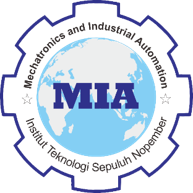Compressive Strength Performance of High-Volume Fly Ash Concrete with CaCO3 Addition
Abstract
Keywords
Full Text:
PDFReferences
Y. Wang, Z. Wen, M. Xu, J. Chen, and P. He, “Plant-level green transformation strategy in China’s cement industry: Considering energy conservation and emission reduction co-benefits,” J. Clean. Prod., vol. 467, no. October 2023, p. 142945, 2024, doi: 10.1016/j.jclepro.2024.142945.
M. E. Bildirici, “Cement production, environmental pollution, and economic growth: evidence from China and USA,” Clean Technol. Environ. Policy, vol. 21, no. 4, pp. 783–793, 2019, doi: 10.1007/s10098-019-01667-3.
G. Deng et al., “Pozzolanic reactivity of carbonated high-calcium fly ash: A mechanism study,” Constr. Build. Mater., vol. 446, no. August, p. 138015, 2024, doi: 10.1016/j.conbuildmat.2024.138015.
H. S. Jang and S. Xing, “A model to predict ammonia emission using a modified genetic artificial neural network: Analyzing cement mixed with fly ash from a coal-fired power plant,” Constr. Build. Mater., vol. 230, p. 117025, 2020, doi: 10.1016/j.conbuildmat.2019.117025.
O. J. Udeze, B. S. Mohammed, A. U. Adebanjo, and I. Abdulkadir, “Optimizing an eco-friendly high-density concrete for offshore applications: A study on fly ash partial replacement and graphene oxide nano reinforcement,” Case Stud. Chem. Environ. Eng., vol. 9, no. October 2023, p. 100592, 2024, doi: 10.1016/j.cscee.2023.100592.
Q. Jin, W. Liao, X. Ni, and H. Ma, “Low-grade fly ash in portland cement blends : A decoupling approach to evaluate reactivity and hydration effects,” Cement, vol. 18, no. September, p. 100119, 2024, doi: 10.1016/j.cement.2024.100119.
L. Lam, Y. L. Wong, and C. S. Poon, “Degree of hydration and gel/space ratio of high-volume fly ash/cement systems,” Cem. Concr. Res., vol. 30, no. 5, pp. 747–756, 2000, doi: 10.1016/S0008-8846(00)00213-1.
C. Herath, C. Gunasekara, D. W. Law, and S. Setunge, “Performance of high volume fly ash concrete incorporating additives: A systematic literature review,” Constr. Build. Mater., vol. 258, p. 120606, 2020, doi: 10.1016/j.conbuildmat.2020.120606.
R. Roychand, S. De Silva, D. Law, and S. Setunge, “High volume fly ash cement composite modified with nano silica, hydrated lime and set accelerator,” Mater. Struct. Constr., vol. 49, no. 5, pp. 1997–2008, 2016, doi: 10.1617/s11527-015-0629-z.
C. H. Huang, S. K. Lin, C. S. Chang, and H. J. Chen, “Mix proportions and mechanical properties of concrete containing very high-volume of Class F fly ash,” Constr. Build. Mater., vol. 46, pp. 71–78, 2013, doi: 10.1016/j.conbuildmat.2013.04.016.
T. Matschei, B. Lothenbach, and F. P. Glasser, “The role of calcium carbonate in cement hydration,” Cem. Concr. Res., vol. 37, no. 4, pp. 551–558, 2007, doi: 10.1016/j.cemconres.2006.10.013.
R. D. Hooton, M. Nokken, and M. D. . Thomas, Portland-Limestone Cement : State-of-the-Art Report and Gap Analysis For CSA A 300 0. University of Toronto, 2007.
J. Péra, S. Husson, and B. Guilhot, “Influence of finely ground limestone on cement hydration,” Cem. Concr. Compos., vol. 21, no. 2, pp. 99–105, 1999, doi: 10.1016/S0958-9465(98)00020-1.
American Society for Testing and Materials, “ASTM C618-19, Standard Specification for Coal Fly Ash and Raw or Calcined Natural Pozzolan for Use in Concrete,” Annu. B. ASTM Stand., no. C, p. 5, 2019, doi: 10.1520/C0618-19.
S. S. Alterary and N. H. Marei, “Fly ash properties, characterization, and applications: A review,” J. King Saud Univ. - Sci., vol. 33, no. 6, p. 101536, 2021, doi: 10.1016/j.jksus.2021.101536.
D. Idam Rifka, Pembuatan Beton Berbahan Dasar High Volume Fly Ash (HVFA( dan High Volume Bottom Ash (HVBA) untuk Bahan Rumah. Institut Teknologi Sepuluh Nopember, 2023.
F. Havy, Studi Potensi Pemanfaatan Pasir Silika Limbah Sandblasting sebagai Pengganti Agregat Halus oada Beton High Volume Fly Ash. Politeknik Perkapalan Negeri Surabaya, 2023.
SNI-1974, “Cara Uji Kuat Tekan Beton dengan Benda Uji Silinder,SNI 1974-2011,” Badan Stand. Nas. Indones., p. 20, 2011.
SNI 1972-2008, “Cara Uji Slump Beton,” Badan Standar Nas. Indones., p. 5, 2008.
F. U. A. Shaikh and S. W. M. Supit, “Mechanical and durability properties of high volume fly ash (HVFA) concrete containing calcium carbonate (CaCO3) nanoparticles,” Constr. Build. Mater., vol. 70, pp. 309–321, 2014, doi: 10.1016/j.conbuildmat.2014.07.099.
DOI: http://dx.doi.org/10.12962%2Fj23378557.v11i1.a22092
Refbacks
- There are currently no refbacks.
This work is licensed under a Creative Commons Attribution 4.0 International License. IPTEK The Journal of Engineering published by Pusat Publikasi Ilmiah, Institut Teknologi Sepuluh Nopember.
Please contact us for order or further information at: email: iptek.joe[at]gmail.com Fax/Telp: 031 5992945. Editorial Office Address: Pusat Riset Building 6th floor, ITS Campus, Sukolilo, Surabaya 60111, Indonesia.








